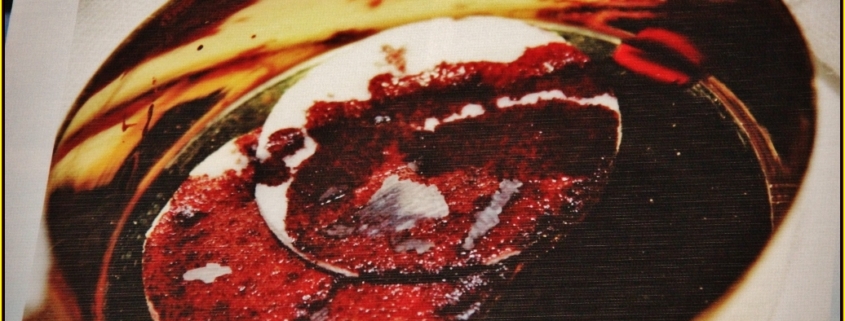What Is “Eucharistic Education”? Why Do We Need It?
The need is acute. Christ our Lord’s greatest gift to His Church—the gift of Himself in the Holy Eucharist—is being neglected by far too many Catholics. The pews are emptying, vocations are plummeting, and the Church is graying because those not attending Mass on Sundays do not realize what they are missing. The King of Kings yearns to enter under their roofs, but He finds closed doors. “We are too busy,” they mutter, as they shuffle from soccer practice to scouts. “We have access to everything on our phones. What need is there for church?”
The time has come to address this crisis of faith head-on. One entity in the Church is specially equipped for this challenge—the Catholic school on the primary, secondary, and university levels. The Catholic school can inspire Catholics to love the Blessed Sacrament through Eucharistic education.
What is “Eucharistic education”? It is more than teaching about the Eucharist, though such teaching is certainly included. Eucharistic education places the Eucharist at the center of a school’s life—its academic curriculum, its formational programming, and, to the extent possible, its extracurricular activities. All of these elements receive their shape from the Eucharist and are ordered to leading students to a deeper love for it. In other words, the Eucharist is the summit and source of a school’s life.
The first step toward a Eucharistic education is explicitly including the Eucharist in every area of a Catholic school. It should be stated in a school’s mission statement: the school exists to develop its students’ personal relationships with Jesus Christ, who is fully present to them in the Eucharist. It should be included, in varying degrees, in both the titles and the content of religion classes at all grade levels. It should feature prominently in religious events in addition to Mass: visits to the chapel, Eucharistic adoration, an annual Eucharistic procession. It should be showcased in artwork and other decorations spread throughout the school building.
When the Eucharist is incorporated into the mission statement, into course titles, and into school décor, administrators, teachers, and campus ministers receive support and motivation to make these stated goals a reality in their classrooms and programming. Once it is clear that every person in the school is scaling the same summit and receiving power from the same source, the day-to-day work of Eucharistic education becomes easier and more exciting.
In the academic realm, religion courses take the lead in providing a Eucharistic education. Regardless of grade level, religion courses typically are divided by theme: God and creation, Jesus Christ, the Church, Sacred Scripture, the sacraments, and morality. In a Eucharistic education, the Eucharist is taught in every course, not just the courses on sacraments including the Mass. The essence of what the Eucharist is, in varying depths depending on the grade level, is repeated every year. In addition, the different course themes allow for different accents on the Eucharist: Scripture courses examine both the Old Testament types of the Eucharist and its New Testament description; morality courses underscore how we live the Eucharist as the sacrament of charity; courses in ecclesiology and Church history highlight how the Church, like the Eucharist itself, is the Body of Christ and how, in the words of St. John Paul II, “the Eucharist builds the Church and the Church makes the Eucharist.”
Religion class lessons are essential, but they are only as strong as the religious programming that makes these lessons become flesh before students’ eyes. That is, religion classes and the celebration of the sacraments are mutually enriching, and the success of one depends on the success of the other. Every effort must be made, then, to ensure that Masses, celebrations of the sacraments, and other religious events, such as holy hours and retreats, treat the Eucharist with the utmost devotion and reverence.
This requires some soul searching on the part of administrators and campus ministers, as the tendency in today’s Catholic schools is to involve multiple students in administering these religious events. The intentions in assigning liturgical roles to students are noble, but the reality of doing so is that the solemnity and the unique character of the Eucharist diminishes if students see their peers handling the Eucharist and taking over roles in the Mass that belong to adults. In particular, students serving as extraordinary ministers of Holy Communion should be avoided: in the minds of students, if a peer can touch something, then that something is not special. To that end, schools can help foster deeper devotion to the Eucharist by encouraging students to receive Holy Communion on their tongues. Students know that they cannot touch precious objects, be they in the home or in a museum. If they are instructed similarly on the Eucharist, they will learn how special the Eucharist is without using books or memorizing definitions.
A key feature of Eucharistic education is that it permeates all curricula, not merely the religion courses. Art, music, Latin, literature, history, and science courses can all include lessons on the Eucharist that, in varying ways, present the Eucharist as the heart of Christian life. These lessons are not catechetical; such instruction occurs in religion course. Rather, these lessons engage students’ hearts and imaginations, which are essential components within a person’s faith life.
In art classes of varying grade levels, students can learn creative ways to depict the fact that the Eucharist is Jesus Christ. They can also study paintings that do the same. In music classes, students can learn the great Eucharistic hymns in English and in Latin. For students studying the Latin language, these hymns take on much more meaning, as they can both reiterate and learn anew grammatical features and vocabulary. In addition to the standard prayers (Pater Noster, Ave Maria), students can begin class with the Eucharistic prayers (Adoro Te Devote, Tantum Ergo) that they can recite, sing, and memorize.
There are not many stories or literary works that include the Eucharist as a major plot element, but incorporating the few that do into the curriculum will allow students to see in an imaginative way how essential the Eucharist is to our lives. Middle school students can read the Chronicles of Narnia with its theme of sacrifice. High school and college students have two short story options: “A Hint of an Explanation,” by Graham Greene, and “Benediction,” by F. Scott Fitzgerald, and the C.S. Lewis novel Till We Have Faces.
History courses offer many opportunities for teachers to add events that most certainly will not be included in the average textbooks but fit perfectly into the traditional chronologically divided periods. For example, when studying Roman history, students can read the letter from Pliny to Emperor Trajan, written in 110 AD, inquiring what the former should do with the Christians in his territory; Pliny briefly describes the celebration of Eucharist at that time. Medieval history can include the first Eucharistic heresy of Berengarius of Tours and the establishment of the feast of Corpus Christi. Courses on the Protestant Reformation can contrast Luther’s heretical theology of the Eucharist with that of Catholic theology. American colonial history can include the French Jesuits of New York and the Mohawks’ attack on St. Isaac Jogues which was motivated by their belief that the saint’s implements for Mass were instruments of black magic.
Science class seems the most unlikely of places to discuss the Eucharist, but, in a secular age, it provides the perfect forum for studying the Eucharistic miracles that have taken place over the centuries, particularly the ones of the twenty-first century that occurred in Poland, India, and Mexico, and that have been studied with the latest scientific instruments. The segue for presenting the miracles could be the study of blood types or of muscle composition. The Eucharistic miracles offer so much to today’s students. First, they offer scientific support for their faith in the word of Jesus Christ that the Eucharist is really His body and blood. Second, they help overcome the popular notion that faith contradicts science. Third, their wondrous nature helps capture not only students’ intellects, but their imaginations as well. As students speculate how it is possible that these miracles came about, they are forced to consider God’s power over creation, a power that can transform ordinary bread and wine into the body and blood of Jesus Christ.
Amidst the variety of academic disciplines and other activities in a school, it can be difficult to unite them all with a single theme. Eucharistic education provides that unity by directing, like a skilled concert master, all of a school’s elements in a harmonious orchestra in which students, teachers, and parents all know the tune. The tune is union with Jesus Christ, who is truly present in the Eucharist. As students study the Eucharist, they study Jesus. As they spend more time with the Eucharist and fall in love with it, they fall in love with Jesus. In helping students grow in this love, the Catholic school has fulfilled its mission. Eucharistic education will lead students to the Bread of Life.

